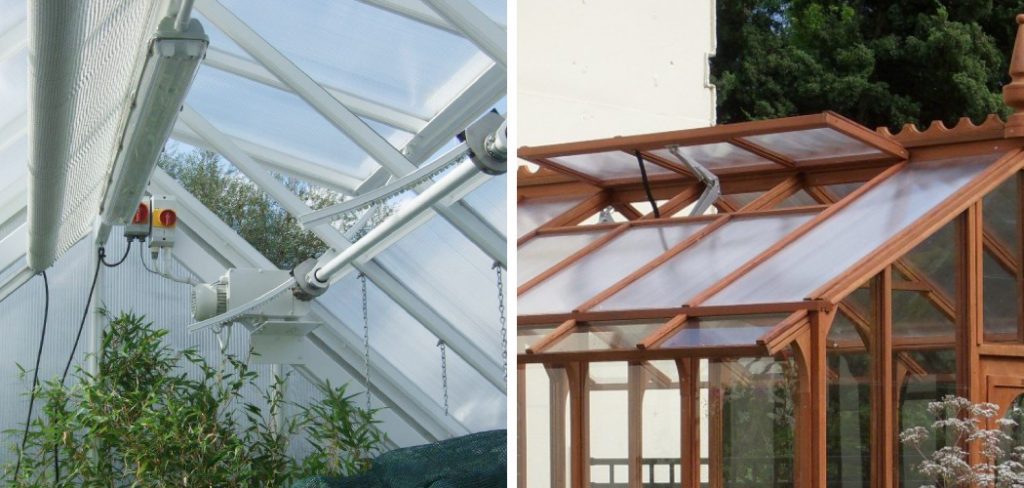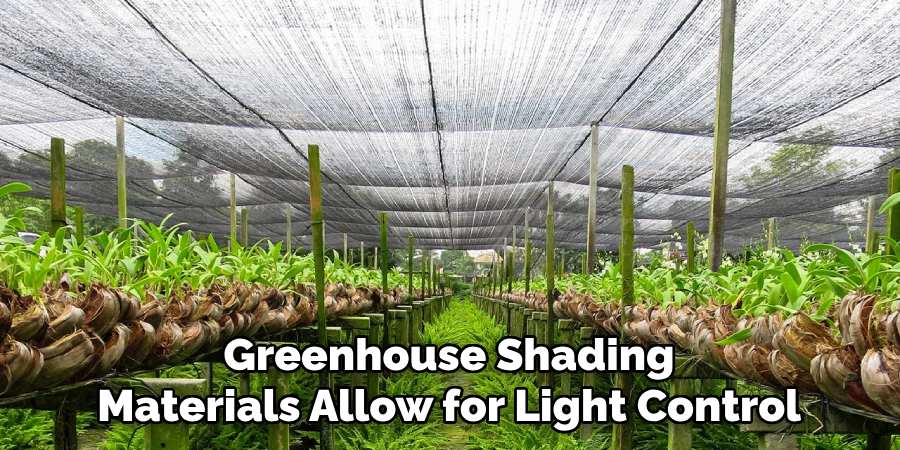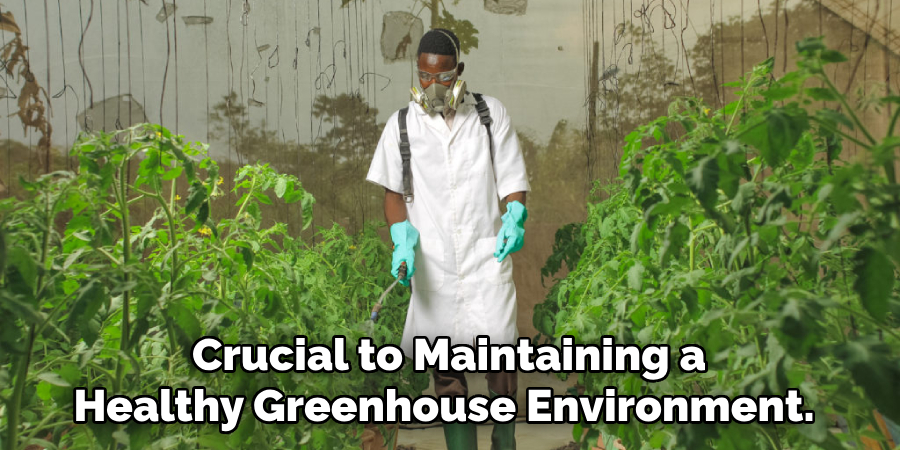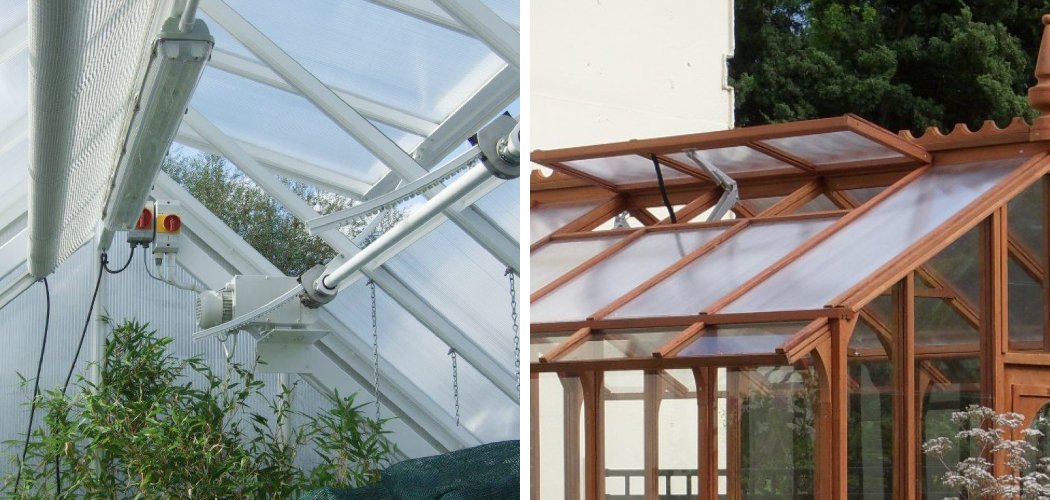To vent a greenhouse, install roof vents and side vents to allow for proper air circulation and temperature control. This will help maintain a healthy environment for plants to thrive.
A well-ventilated greenhouse is essential for the successful growth of plants. Proper ventilation ensures that there is an adequate exchange of air, which is crucial for controlling temperature, humidity, and preventing the buildup of stale air that can lead to diseases and pests.
By installing roof vents and side vents, you can effectively regulate the airflow and create a harmonious environment for your plants. In this article, we will explore different methods and options for venting a greenhouse, providing you with practical solutions to ensure optimal growing conditions for your beloved plants. So let’s dive in and learn how to properly vent your greenhouse.

Benefits Of Greenhouse Ventilation
Greenhouse ventilation offers numerous benefits, including improved air circulation, temperature regulation, reduction of humidity levels, prevention of plant diseases, and effective pollination. By allowing fresh air to flow through the greenhouse, proper ventilation helps plants receive the necessary oxygen for growth and development.
It also helps regulate temperature, preventing excessive heat buildup during the day and cold drafts at night. Moreover, ventilation reduces humidity levels, preventing the growth of mold and mildew that can harm plants. By maintaining optimal air quality, greenhouse ventilation minimizes the risk of plant diseases, resulting in healthier crops.
Additionally, the circulation of air facilitates effective pollination, ensuring the production of high-quality fruits and vegetables. To maximize the benefits of greenhouse ventilation, it is important to choose the appropriate ventilation system and regularly monitor and adjust airflow. Proper greenhouse ventilation is essential for creating an optimal environment for plant growth and maximizing crop productivity.
How to Vent a Greenhouse: Step by Step Guide
Natural Ventilation Methods For Greenhouses
Natural ventilation methods are essential for maintaining optimal conditions in greenhouses. One way to achieve this is through roof venting options. By incorporating roof vents, you can allow hot air to escape, creating a cooler environment for your plants. Additionally, side venting options can further enhance airflow and temperature control.
These vents can be strategically placed on the sides of the greenhouse to facilitate cross ventilation. Another effective option is automatic window openers, which automatically adjust the windows based on temperature changes. This ensures continuous airflow even when you’re not around.
Lastly, ventilation fans can be installed to circulate air and prevent stagnation. These fans promote the exchange of fresh air, reducing the risk of disease and moisture-related issues. By implementing these natural ventilation methods, you can create the ideal environment for your greenhouse plants.
Design An Efficient Greenhouse Ventilation System
Designing an efficient greenhouse ventilation system requires assessing the size and layout of your greenhouse. Determine the appropriate venting requirements based on these factors. Position the vents strategically to ensure optimal air circulation. Take into account the prevailing wind direction for effective ventilation.
Integrate temperature and humidity sensors to monitor the greenhouse environment. To further enhance airflow, implement a fan system. By following these steps, you can successfully vent your greenhouse for healthier and more productive plants.
Different Types Of Greenhouse Ventilation Systems
Different types of greenhouse ventilation systems include simple manual venting systems, passive venting systems, mechanical venting systems, combination systems, and cooling pad systems. These systems are essential for maintaining optimal temperature and humidity levels inside a greenhouse. Simple manual venting systems allow for manual adjustment of vents to control airflow.
Passive venting systems rely on natural forces, such as temperature and wind, to regulate ventilation. Mechanical venting systems utilize fans and motors to actively circulate air. Combination systems combine different types of venting methods to provide the best ventilation solution for specific greenhouse needs.
Finally, cooling pad systems use water-soaked pads to cool and maintain humidity levels within the greenhouse. Proper greenhouse ventilation is crucial for promoting plant growth, preventing diseases, and maximizing the efficiency of greenhouse operations.
Essential Tools And Equipment For Venting A Greenhouse
Venting a greenhouse requires essential tools and equipment. Vent openers and operators ensure proper airflow. Fan systems and controllers help regulate temperature and humidity. Installing temperature and humidity sensors provides accurate monitoring. Greenhouse shading materials allow for light control. Air intake louvers facilitate fresh air circulation.

Additionally, using insulation materials assists in adjusting vents as needed. Proper ventilation is crucial for maintaining a healthy environment for plants to thrive in a greenhouse. By utilizing these tools and equipment, you can effectively vent your greenhouse and promote optimal plant growth.
Best Practices For Greenhouse Ventilation
Proper ventilation is essential for maintaining a healthy greenhouse environment. Regular maintenance and cleaning of vents is crucial for optimal airflow. Checking and replacing worn-out or damaged venting components ensures efficient ventilation. Monitoring and adjusting vents based on weather conditions is necessary to control temperature and humidity levels.
The calibration of sensors and controllers allows for accurate readings and control of the ventilation system. Additionally, observing plant growth and health indicators helps identify any issues that may arise. By following these best practices, you can effectively vent your greenhouse and create an ideal growing environment for your plants.
Advanced Ventilation Techniques For Greenhouses
Advanced ventilation techniques play a crucial role in effectively venting a greenhouse. One such technique is the use of evaporative cooling systems, which help regulate temperature and humidity levels. Another effective method is the integration of environmental control computers, allowing for automated venting control.
Additionally, heat-recycling systems can be utilized to retain and redistribute wasted heat, increasing energy efficiency. Lastly, incorporating misting or fogging systems aids in maintaining optimal conditions for plant growth. These techniques not only improve the overall greenhouse environment but also ensure the health and productivity of the plants.
So, for successful greenhouse venting, consider implementing these advanced ventilation techniques.
Troubleshooting Common Ventilation Issues In Greenhouses
Troubleshooting common ventilation issues in greenhouses requires addressing several problems. Insufficient air circulation can hinder plant growth. High humidity levels can contribute to mold and disease. Uneven temperature distribution can lead to uneven plant growth and stress. Controlling pest infestations is crucial to maintaining a healthy greenhouse environment.

To deal with excessive condensation, proper insulation and ventilation are necessary. By addressing these key issues, greenhouse owners can optimize their growing conditions and ensure the success of their plants.
Frequently Asked Questions On How To Vent A Greenhouse
How Do You Vent A Greenhouse In The Summer?
To vent a greenhouse in the summer, open the windows and doors to allow air circulation. Utilize evaporative cooling methods, such as misters or shade cloth, to keep interior temperatures down during hot periods.
What Is The Purpose Of Venting A Greenhouse?
Venting a greenhouse helps control the temperature, humidity, and airflow inside. By allowing hot air to escape and fresh air to enter, it prevents heat buildup, reduces the risk of diseases, and promotes plant growth and productivity.
What Are The Best Greenhouse Ventilation Methods?
The best methods for greenhouse ventilation include natural ventilation through windows, doors, or vents, and mechanical ventilation systems like exhaust fans or evaporative coolers. A combination of both methods ensures optimal airflow based on the specific needs and conditions of the greenhouse.
How Often Should A Greenhouse Be Vented?
The frequency of greenhouse venting depends on the outside temperature, humidity levels, and the condition of the plants. Generally, it is recommended to vent the greenhouse several times a day, especially during the hottest hours, to prevent overheating and promote air exchange.
Can Automatic Greenhouse Vent Openers Help?
Yes, automatic greenhouse vent openers can be quite helpful. They are designed to automatically open and close vents based on temperature, ensuring proper airflow without manual intervention. These devices provide convenience and help regulate temperature fluctuations in the greenhouse.
Are There Any Alternatives To Ventilation For Cooling A Greenhouse?
Besides ventilation, alternative cooling methods for a greenhouse include shading with materials like shade cloth or paint, using evaporative coolers, or installing misting systems. However, ventilation is crucial, as it provides fresh air exchange and is vital in preventing excessive heat and humidity buildup in the greenhouse.
Conclusion
Proper ventilation is crucial for maintaining a healthy and thriving greenhouse environment. By understanding the importance of venting and implementing the right strategies, you can ensure optimal air circulation and temperature control for your plants. Remember to regularly monitor the temperature and humidity levels inside your greenhouse.
Use the appropriate ventilation systems such as vents, fans, and louvers to create airflow and prevent the buildup of excessive heat and moisture. Consider utilizing natural ventilation methods like ridge vents or side vents that allow hot air to escape and fresh air to enter.
Additionally, using shade cloths or screens can help regulate the amount of sunlight and prevent overheating. Implementing these ventilation techniques will not only improve plant growth and productivity but also provide a comfortable and healthy environment for you to work in.
Start implementing these tips and watch your greenhouse thrive!

